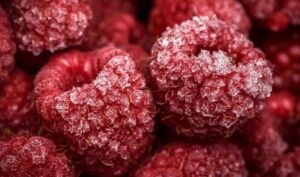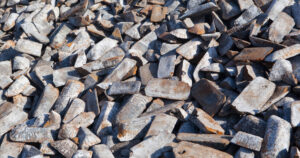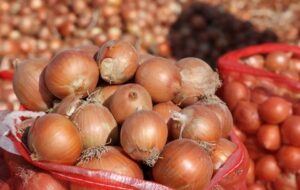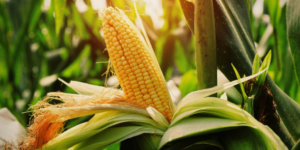
High prices for berries in the 2025 season were caused by spring frosts, which damaged 20-50% of the crop in a number of regions of Ukraine, as well as global market conditions, said Taras Bashtannik, president of the Ukrainian Fruit and Vegetable Association (UFVA).
“If we talk about prices in 2025, losses for all major berry items ranged from 20-50%, primarily due to spring frosts. All major exporting countries of the main items – strawberries, raspberries, blueberries, and cherries – also suffered crop losses,” he said at the Agro2Food exhibition.
The head of the association noted that high product prices allowed producers to compensate for the final financial result.
Bashkanik recalled that during the years of war, Ukrainian berry farming lost a lot of production areas, in particular in the Kherson and Mykolaiv regions, where early berries were grown.
“We can only state that, for example, from 2022 to the present, many perennial plantations have been planted, including 3,800 hectares under the state grant program. And without state assistance, we are talking about 4,500-5,000 hectares. In total, berry growing is currently carried out on 17-20 thousand hectares,” said the head of the UPOA.
According to the expert’s estimate, 95% of all raspberries grown in Ukraine are currently processed, mainly for freezing. At the same time, 95% of this product is exported.
“From 2017 to 2025, Ukraine has gone from being a net importer or having a zero import-export balance of frozen raspberries to becoming the largest exporter of frozen raspberries in Europe,” said Bashtannik.
According to his information, no more than 5% of cultivated blueberries in Ukraine are processed. The rest is mostly exported fresh for economic reasons. However, there is a rapid global trend in this crop: in the US, 50% of blueberries are processed, and in Europe, 30%. In Ukraine, this figure is approaching 30%.
In Ukraine, 25-30% of the gross harvest of garden strawberries is processed. Almost the entire volume of processed products remains in Ukraine for domestic consumption.
“Unfortunately, we have to admit that Ukraine, as a producer and exporter of frozen strawberries, has no place in Europe and the world, given the costs and prices offered by Morocco, Egypt, Tunisia, and China,” said the expert.
Speaking about the production of jams and preserves, Bashtannik noted that craft production dominates this segment. Its products are sufficient to meet the needs of HoReCa, while retail mostly covers the needs of Ukrainians through imports. The production of several powerful domestic players is not enough to meet the needs of supermarket shoppers.
“If we don’t take into account any black swans that may or may not appear, the expectations for 2026 in the industry are positive. Ukraine will continue to increase its presence in the European market for fresh and processed berries. Despite the labor shortage, we look more attractive in terms of cost compared to European countries. Therefore, we will take market share from countries that have traditionally dominated the European market. These are Poland and Serbia, first and foremost,” summarized the head of the UPOA.

According to the results of 2024, Ukraine produced 7.1 million tons of pig iron, of which 1.3 million tons were exported. Apparent consumption of pig iron increased to 5.8 million tons, which is 21% more than in 2023 (4.8 million tons).
Ukraine rose to 10th place in the global ranking of net pig iron exporters with 3.4 million tons, while in 2023 it ranked 12th with 2.2 million tons.
Despite the positive dynamics in pig iron production and exports, Ukraine remains outside the top 20 steel exporters, a status it lost after 2021, when it exported 15.7 million tons of metal products and ranked 10th in the world.

Logistics remains one of the most difficult problems for Ukrainian exporters of processed grain products since the beginning of Russia’s full-scale invasion of Ukraine in 2022, said Rodion Rybchynskyi, Director of the PU “Millers of Ukraine” Rodion Rybchynskyi at the Baltic Grains & Oils Conference in Riga on April 16.
“The commonwealth routes, i.e. the open routes provided by European countries to their railways, including here to the Baltic ports and to Polish ports, helped us a lot. But this still does not allow us to fully compensate for the losses we have suffered since the beginning of the war,” APK-Inform news agency quoted him as saying.
According to him, there is a possibility to ship products to the port of Constanta via the Danube, but there are still military risks, insurance companies assess these risks as high, and the cost of logistics remains significant.
“The Baltic ports are interesting, on the one hand, because they have direct container lines and the possibility of shipping to North America, South Asia, and so on. But this is a very large circle for the goods to get there… In fact, we see that compared to 2021, only the port of Ventspils transshipped slightly more Ukrainian products, while all other ports have decreased. For example, the port of Klaipeda actually halved its transshipment volumes in 2023,” Rybczynski said.
At the same time, Polish ports have significantly increased transshipment volumes of Ukrainian products, in particular grain products.
According to Rybczynski, Baltic ports remain important alternative routes for exports from Ukraine. The main advantages include access to Northern and Western Europe, delivery times, climate stability, modern infrastructure, less congestion and, most importantly, safe navigation. The disadvantages include logistics costs that are 2-3 times higher compared to the Danube ports, higher cargo handling costs, and railroad bottlenecks.

The international information and analytical platform EastFruit has published an article in which Uzbekistan may become one of the world’s 5 largest exporters of fresh onions by the end of the 2023/24 season.
The publication reports that the 2023/24 season was marked by bans on the export of onions from many countries. In particular, Egypt, which is usually one of the five largest exporters, introduced a ban on onion exports.
In Uzbekistan, as in many other countries in the region, records were set in terms of onion production areas and volumes. As a result, onion prices in Uzbekistan in January were 40% lower than at the time of harvest, which guaranteed losses for resellers.
Traders began to actively look for opportunities to export onions, as in January onions from Uzbekistan flooded the wholesale markets in Poland. In addition, the first export shipments of the new onion harvest of 300 thousand tons are planned for the end of March, which may be a new export record. This will allow Uzbekistan to overtake Poland, Afghanistan, Spain, Egypt and possibly the United States in terms of onion exports and enter the top 5 global exporters.

In September, the Export Credit Agency (ECA) insured exporters’ loan agreements worth UAH 50.5 million, according to the ECA website.
It is specified that the volume of supported exports for the month amounted to UAH 162.8 million.
The most popular categories of goods for export in September were (by foreign economic activity groups) processed vegetables, ferrous metal products, and finished products made from grain, flour, starch, and milk, while the counterpart countries were Poland, the Czech Republic, the Netherlands, Germany, and Lithuania.
The top three partner banks were Ukrgasbank (UAH 71.1 million of supported exports and UAH 21.9 million of financing), Oschadbank (UAH 52.8 million and UAH 20.6 million), and Kredobank (UAH 38.9 million and UAH 8 million), respectively.
This year, Ukrgasbank ranks first (UAH 1.35 billion of exports supported and UAH 159 million of loans disbursed), Raiffeisen Bank is second (UAH 605 million and UAH 210 million), and Oschadbank is third (UAH 584.7 million and UAH 128.67 million).
In September, entrepreneurs from Ivano-Frankivsk region were the most active in insuring their loans received under export contracts with the ECA (the amount of contacts amounted to UAH 51.5 million and the amount of loans was UAH 11.9 million), Dnipropetrovs’k region (UAH 38.9 million and UAH 8 million), Ternopil region (UAH 29.24 million and UAH 18.3 million), Zakarpattia region (UAH 23.55 million and UAH 2.3 million), and Rivne region (UAH 19.63 million and UAH 10 million).
In the first nine months of this year, ECA and its partner banks found the largest number of customers in Kyiv (UAH 311.27 million of insured loans), as well as in Dnipropetrovska (UAH 53.63 million) and Vinnytska (UAH 10.5 million) regions.

The State Service of Ukraine for Food Safety and Consumer Protection (SSUFSCP) has reminded interested parties about the formation of the List of corn and soybean exporters to the People’s Republic of China (PRC) and the List of storage facilities for these goods for further export to China.
As explained by the press service of the Ministry, this is done to ensure compliance with the requirements of the protocol of phytosanitary and inspection requirements for the export of corn and soybeans from Ukraine to China.
The documents confirming the phytosanitary procedures of the corn and soybean growing and storage facilities in order to include a person in the Lists must be sent to the State Service of Ukraine on Food Safety and Consumer Protection by October 16.
The agency reminds that the grounds for refusal to issue a phytosanitary certificate or a phytosanitary certificate for re-export are the non-compliance of the regulated objects with the requirements of the phytosanitary measures of the importing country.